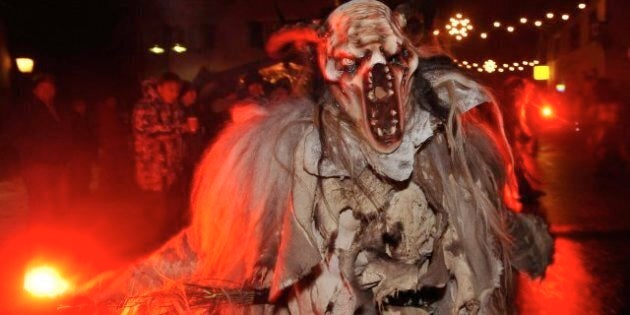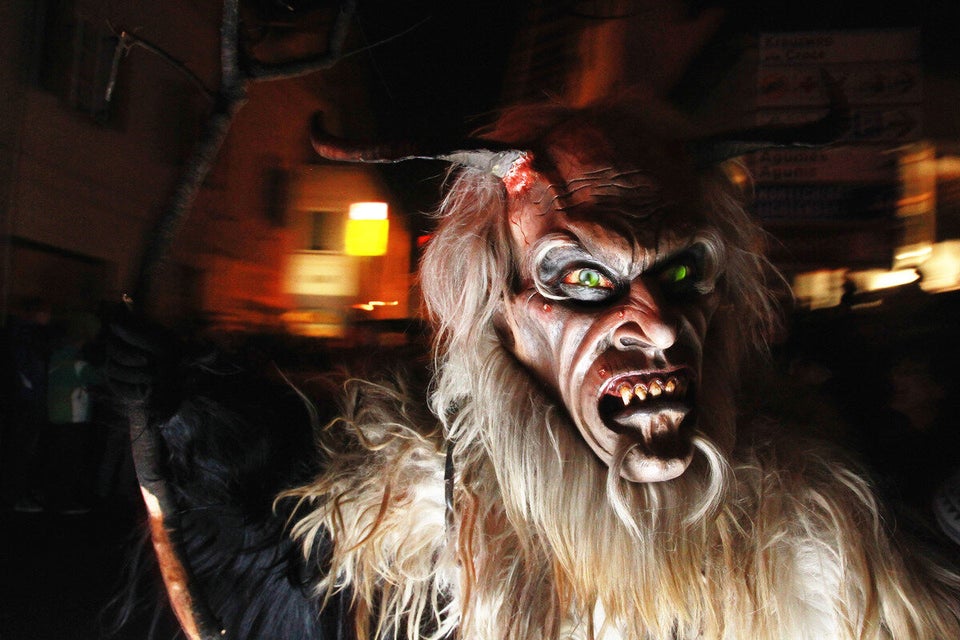
Santa Claus is coming to town, but depending on where you are in the world, he may be packing more than a giant bag of toys and lumps of coal.
For the roughly 2.3 billion Christians around the world (and the millions more who still celebrate Christmas regardless of their faith), Santa Claus represents a mythical figure who travels from the North Pole via a magical sleigh and squad of reindeer once a year. On the 24th of December, otherwise known as Christmas Eve, Santa delivers presents to children at night who've been good this year and lumps of coal to those who have been naughty. The origins of Santa are a mixture of historical and mythical with Santa being based off of St Nicholas, while Santa Claus comes from the legend of Sinterklaas, according to the South China Morning Post. While Santa is the arguably the most well-known Christmas figure (NORAD has yet to invest in the technology to track down Frosty the Snowman), he also has a wide variety of aliases across the globe.
In western European countries like Austria and Germany, Santa has something of an evil twin called Krampus. Think of him or it as 'Bizzaro Santa', who looks like a cross between a goat and Bigfoot. Every year, Krampus hands out lumps of coal and beatings to those who've been misbehaving this year, as well as kidnaps those who've been particularly naughty. Joining Krampus is La Pere Fouettard, who is less of a 'Nega-Santa" and more of a lackey that likes to beat children, according to French lore.
While the tales of Santa vary from country to country, the tradition of rewarding the good and punishing the bad seems to be consistent regardless of wherever believers live. To see how Santa's reputation differs around the world, check out the gallery below.
Santa's Different Reputation Around The World. Slideshow text follows for mobile readers:
Krampus
Where he can be found: Austria, Germany, France, Slovenia, Italy, Croatia and Hungary.
The story: Krampus hails from traditional German folklore and is something of an anti-Santa, kidnapping and beating children who've behaved poorly. The tradition of Krampus still lives on today, though the modern approach is for men from Alpine countries to dress up like Krampus and frighten little children with the sound of rusty chains and bells.
La Pere Fouettard and Pere Noel
Where they can be found: France, parts of Belgium
The story: In France, La Pere Fouettard, otherwise known as the whipping father, works with Santa to punish kids who've been bad during the year. Meanwhile, his nicer counterpart, Pere Noel (Father Christmas) gets to work rewarding all the nice kids around the world. The name "The Whipping Father" probably explains exactly what La Pere Fouettard does to kids, though legend has it that La Pere Fouettard was a bad man, and in order to repent for his terrible ways, he vowed to work for Santa.
Sinterklaas and Black Peter
Where they can be found: The Netherlands and Belgium
The story: For some, Christmas Eve and Day take place on the fifth and sixth of December in honour of Saint Nicholas, a holiday figure that's the equivalent of Santa. Saint Nicholas, who also operates under the name Sinterklaas, fulfils the usual duties that are expected of a Santa (travelling the world, making a naughty or nice list and doling out presents). What makes Sinterklaas a bit different is that he has a helper: Black Peter. Traditionally, his helper would be the one who climbed down the chimneys to deliver presents. Pete's trips down the chutes would leave him covered in soot, hence the name Black Peter.
Ded Moroz
Where he can be found: Russia
The story: In Russia, Santa's equal is Ded Moroz, whose name roughly translates to Grandfather Frost. Rather than leaving presents under the guise of night-time, Ded Moroz prefers to hand out gifts in person. He doesn't work alone though; Slavic folklore says he is accompanied by his granddaughter, Snegurochka (the snow maiden). Together they act as a counterbalance to the evils of Baba Yaga, a witch who likes to steal the presents of children during Christmas.
La Befana
Where she can be found: Italy
The story: Speaking of witches, meet La Befana, a witch who delivers gifts to children in parts of Italy. Rather than flying in on a sleigh, La Befana opts for a broomstick and a large sack filled with toys and enters the homes of children to leave presents. She's probably got more in common with a ninja than Santa though, as she's typically depicted as someone dressed in black shawl and covered in soot from entering chimneys. Like Santa, she also leaves coal for the naughty kids
Tomte
Where it can be found: Norway, Sweden, Denmark
The story: The word Tomte refers to a Scandinavian myth about small gnomish creatures that looked over a farmer's land. As Christianity spread across the region, Christmas gift-giving duties fell into the Tomtes' hands. There's very little that Tomte share with traditional lore of Santa, but it's said that households in Norway, Sweden and Denmark leave a bowl of porridge for Tomte in lieu of the tradition of cookies and milk found in North America.
Jolasveinar
Where they can be found: Iceland
The story: What's better than one Santa? How about 13 Santas? Jolasveinar, or Yule Lads as they're more commonly known in English, refers to the group of 13 sons of mountain trolls. Ancient Icelandic folklore has them painted as mischievous sorts, stealing from houses and disturbing farmer animals. However, modern renditions of Jolasveinar has them portrayed more like a band of Santas leaving gifts for the good and potatoes in the shoes of the naughty.
